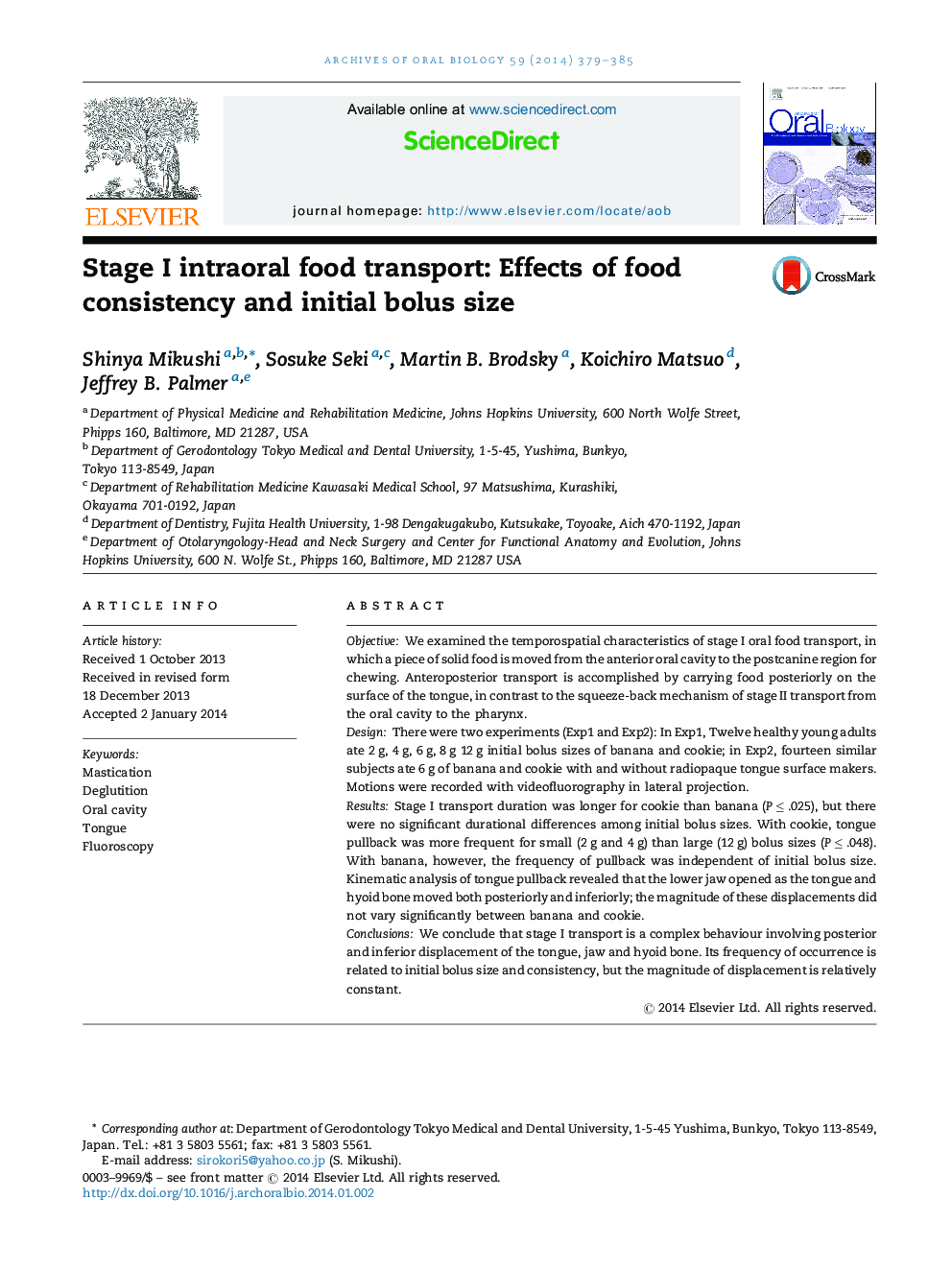| کد مقاله | کد نشریه | سال انتشار | مقاله انگلیسی | نسخه تمام متن |
|---|---|---|---|---|
| 3120940 | 1583313 | 2014 | 7 صفحه PDF | دانلود رایگان |
ObjectiveWe examined the temporospatial characteristics of stage I oral food transport, in which a piece of solid food is moved from the anterior oral cavity to the postcanine region for chewing. Anteroposterior transport is accomplished by carrying food posteriorly on the surface of the tongue, in contrast to the squeeze-back mechanism of stage II transport from the oral cavity to the pharynx.DesignThere were two experiments (Exp1 and Exp2): In Exp1, Twelve healthy young adults ate 2 g, 4 g, 6 g, 8 g 12 g initial bolus sizes of banana and cookie; in Exp2, fourteen similar subjects ate 6 g of banana and cookie with and without radiopaque tongue surface makers. Motions were recorded with videofluorography in lateral projection.ResultsStage I transport duration was longer for cookie than banana (P ≤ .025), but there were no significant durational differences among initial bolus sizes. With cookie, tongue pullback was more frequent for small (2 g and 4 g) than large (12 g) bolus sizes (P ≤ .048). With banana, however, the frequency of pullback was independent of initial bolus size. Kinematic analysis of tongue pullback revealed that the lower jaw opened as the tongue and hyoid bone moved both posteriorly and inferiorly; the magnitude of these displacements did not vary significantly between banana and cookie.ConclusionsWe conclude that stage I transport is a complex behaviour involving posterior and inferior displacement of the tongue, jaw and hyoid bone. Its frequency of occurrence is related to initial bolus size and consistency, but the magnitude of displacement is relatively constant.
Journal: Archives of Oral Biology - Volume 59, Issue 4, April 2014, Pages 379–385
